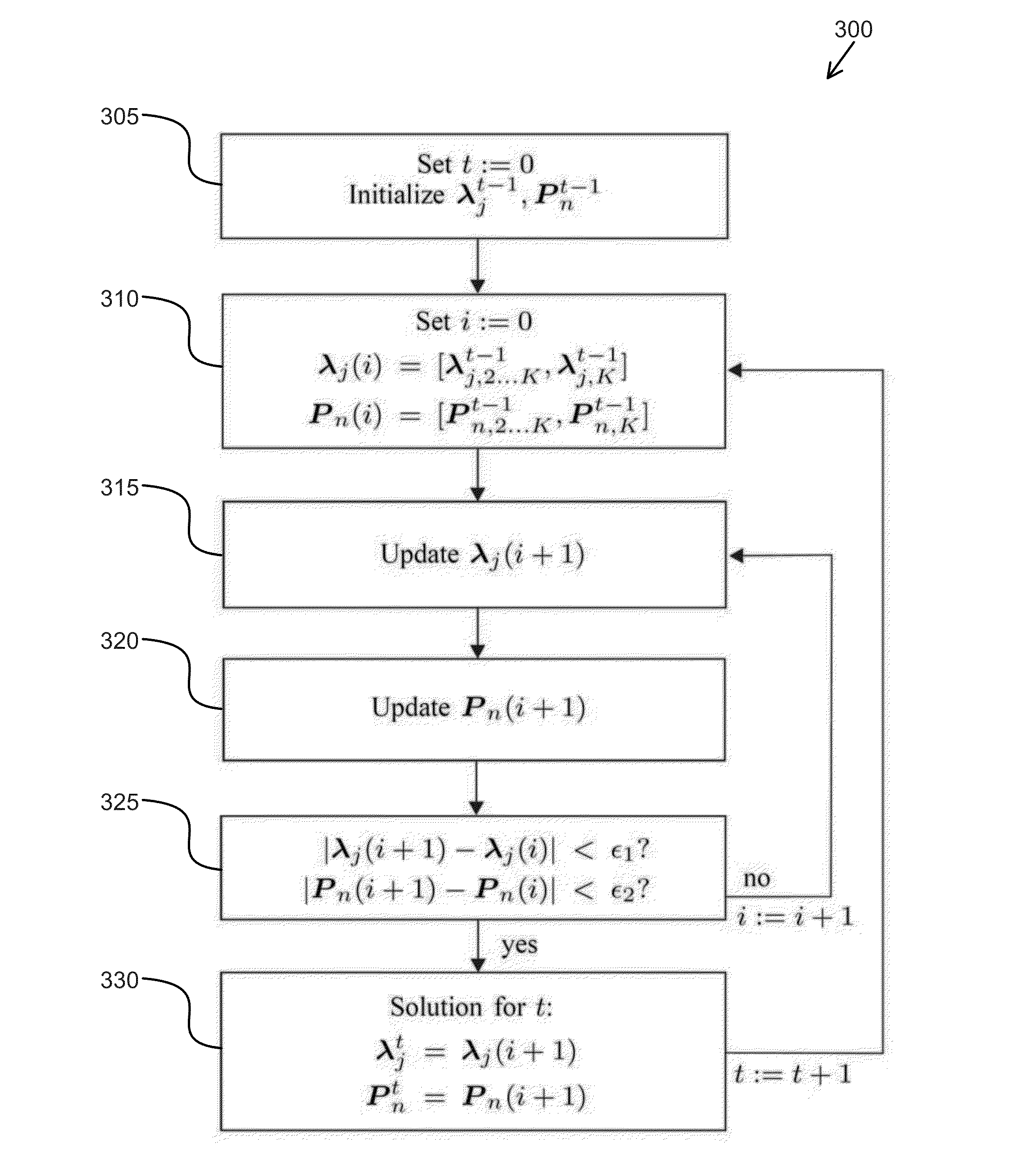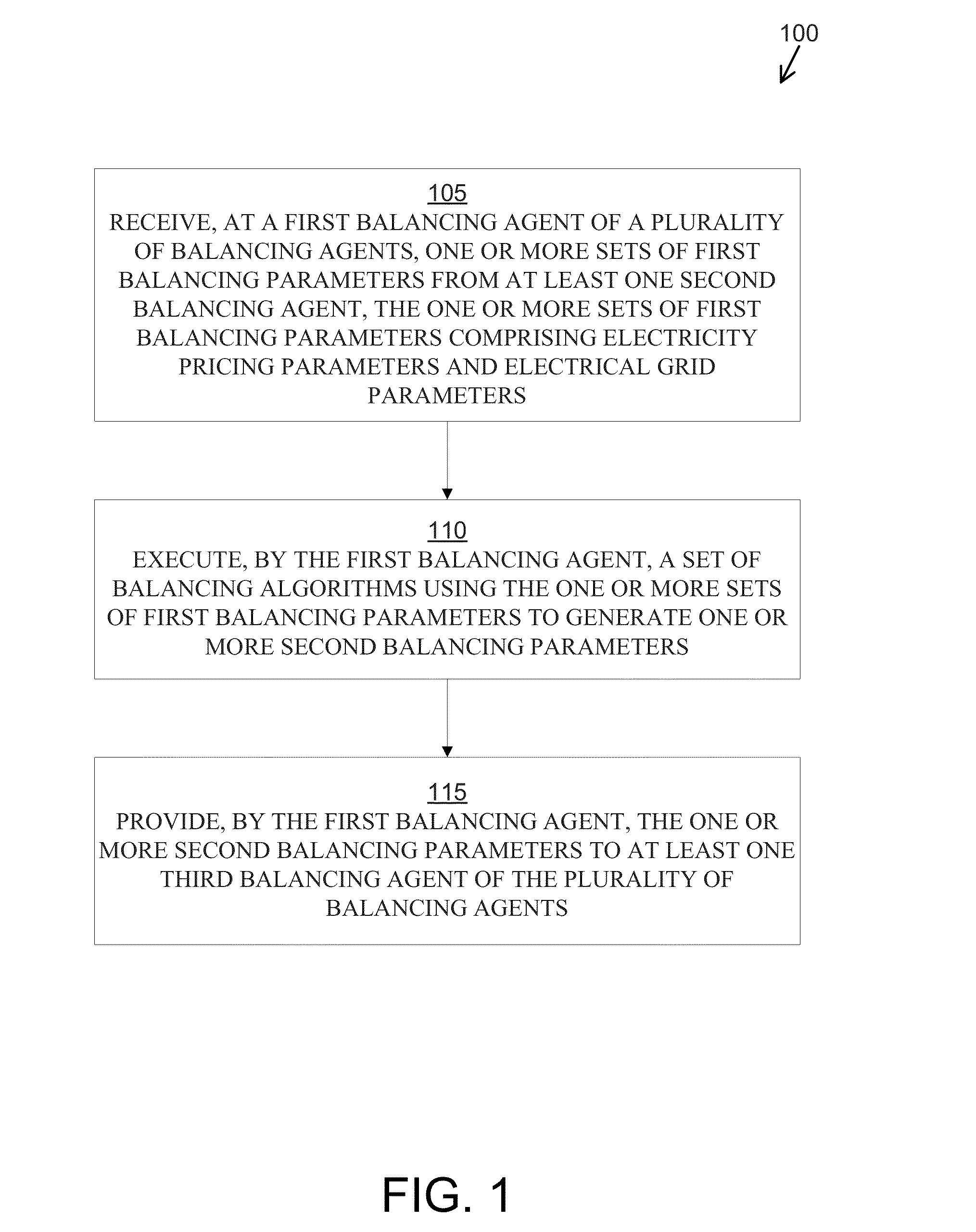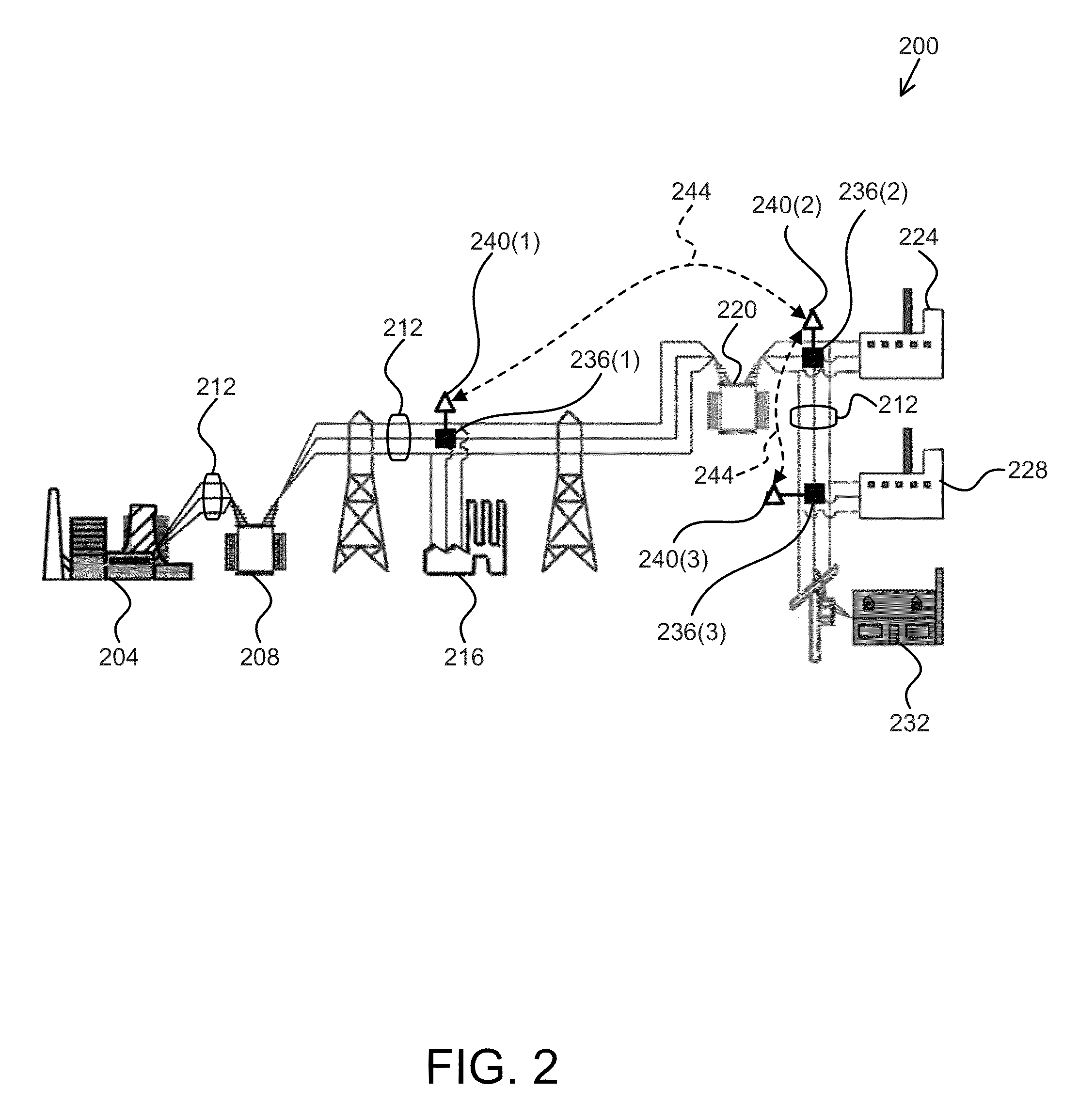Distributed Methods and Software For Balancing Supply and Demand In An Electric Power Network
a technology of electric power network and distribution method, applied in the direction of electric variable regulation, process and machine control, instruments, etc., can solve the problem of no longer sufficient centralized approach
- Summary
- Abstract
- Description
- Claims
- Application Information
AI Technical Summary
Benefits of technology
Problems solved by technology
Method used
Image
Examples
Embodiment Construction
[0024]In contrast to electric power networks controlled by a single or a few centralized entities, a distributed approach requires a fundamentally different communication infrastructure from a centralized approach. In some centralized approaches, communication may be required between individual participants (network components) and one or more central entities, while in distributed approaches communication can take place directly between participants. Such a significantly enhanced communication infrastructure is a major component of the vision for the future electric power systems, such as a so-called “smart grid,” that utilize distributed control and scheduling algorithms and could render central control entities obsolete. However, a distributed approach could also be implemented in conjunction with a central entity, enabling parallel and efficient computation at a central location. One general approach to managing electric power generation and allocation, referred to as the “econo...
PUM
 Login to View More
Login to View More Abstract
Description
Claims
Application Information
 Login to View More
Login to View More - R&D
- Intellectual Property
- Life Sciences
- Materials
- Tech Scout
- Unparalleled Data Quality
- Higher Quality Content
- 60% Fewer Hallucinations
Browse by: Latest US Patents, China's latest patents, Technical Efficacy Thesaurus, Application Domain, Technology Topic, Popular Technical Reports.
© 2025 PatSnap. All rights reserved.Legal|Privacy policy|Modern Slavery Act Transparency Statement|Sitemap|About US| Contact US: help@patsnap.com



